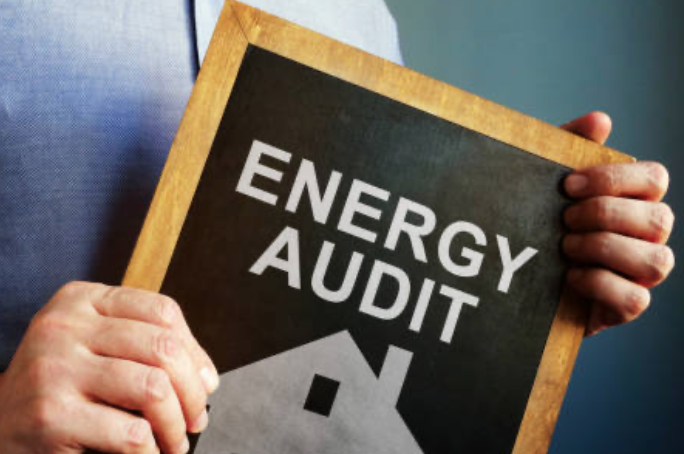
-
DIY Home Energy Audit: A Comprehensive Guide
16 Sep 2023 by Russel Gerber in Vibe
When managing household expenses, energy costs often rank high on the list. Many homeowners are unaware that a substantial portion of their monthly bills could be due to energy inefficiencies in their homes. That’s where a DIY Home Energy Audit can be a game-changer. If you’re considering options like a Reverse mortgage calculator to figure out how to free up some resources, understanding and reducing your energy consumption could be another feasible way to stretch your hard-earned dollars.
What is a Home Energy Audit, and Why Should You Do It Yourself?
A home energy audit involves inspecting your home’s systems, appliances, and insulation to identify areas where energy may be wasted or lost. This can help you determine where you need to make improvements to boost your home’s energy efficiency.
A professional energy audit can be expensive, and that’s where a DIY home energy audit comes in handy. By conducting your audit, you can save resources that would have otherwise been spent on hiring a professional auditor. Plus, you’ll have a much deeper understanding of your home’s energy systems by doing it yourself.
The Benefits of Conducting Your Own Home Energy Audit
Conducting a DIY energy audit can help you benefit in multiple ways. Here are a few reasons why you should consider it:
- Identify Areas for Energy Savings: By inspecting your home’s energy systems in detail, you can identify areas where energy may be wasted or lost. This can help you make eco-friendly upgrades and modifications to your home to help you save money and reduce your carbon footprint.
- Maximize Your Home’s Comfort: By increasing your home’s energy efficiency, you can make your home more comfortable. This can help you create a more comfortable living space for yourself and your family without worrying about rising energy costs.
- Save Money on Your Energy Bills: Improving your home’s energy efficiency can help you save on your energy bills. You’ll be able to identify energy drains in your home that can add up quickly over time. Conserving energy can also help you reduce your carbon footprint.
Preparing for Your DIY Home Energy Audit
Before beginning your DIY energy audit, you’ll need to prepare by following these initial steps:
- Gather Information About Your Home: Before starting the audit, gather all information about your home’s energy systems, such as age, size, heating and cooling systems, and insulation.
- Evaluate Your Energy Bills: Review your energy bills from the previous year to understand your energy consumption. This will help you identify how much energy your household uses and when.
- Prepare an Audit Checklist: Develop an audit checklist to help evaluate each part of your home’s energy systems.
Understanding the Different Types of Audits
There are several types of energy audits to choose from, and you can look into these before you start your DIY audit project.
- Walk-Through Audit: A no-cost audit that requires a brief walk-through of your home. This overviews your home’s energy consumption and identifies low-cost improvements.
- DIY Audit: As discussed earlier, a DIY audit requires inspecting your home’s energy systems. This is more in-depth than a walk-through audit and can help you significantly upgrade.
- Professional Audit: It involves a complete inspection by a team of professionals. This audit is the most comprehensive but comes with a higher price tag.
Gather the Necessary Materials for an Accurate Audit
Now that you understand the different types of energy audits, it’s time to gather the materials needed for a comprehensive DIY energy audit. Here are the materials you’ll need:
- A clipboard and paper to make notes and record your findings.
- Calculators, thermometers, and a flashlight.
- An infrared thermometer or thermal imaging camera will help determine where your home is losing heat.
Detailed Steps to Perform Your DIY Home Energy Audit
Here are the detailed steps to conduct your DIY home energy audit:
- Inspect the Exterior of Your Home: Start by inspecting the exterior of your home. Look for cracks or gaps near doors and windows, missing shingles on the roof, or weathered siding.
- Evaluate the Insulation: Check your insulation, including walls, attic, and basement, by checking the insulation thickness or performing a “touch test” to see whether it feels cold or warm.
- Inspect Your Heating and Cooling Systems: Check your heating and cooling systems’ age, condition, and efficiency rating. You may need to replace old and inefficient methods to help save energy.
- Check Your Windows and Doors: Check for drafts around doors and windows. Use caulk and weather stripping to seal the gaps.
- Inspect Appliances and Lighting: Check the efficiency rating of your appliances and lighting systems. Switching to energy-efficient appliances and LED lighting can help you save on energy bills.
Latest News
-
Caprice Summer Has Started With Brunch (But Better) This Saturday + Other Lush Camps Bay Parties
[imagesource: Instagram/cafecaprice] Is it just me or has Summer been taking its sweet ...
-
Notre-Dame Cathedral In Paris Restored And Ready For Grand Reopening After Devastating Fire
[imagesource:wikimedia] After five years of work and millions in donations, The Notre-D...
-
Self-Destructing Number Plates: The Future Of Gauteng’s Roads Or Spy-Tech Fantasy?
[imagesource:worldlicenseplates.com] What sounds like a James Bond movie is becoming a ...
-
I Changed My Relationship With Food And You Won’t Believe What Happened Next
[imagesource:supplied] As the festive season approaches, it's time to deck the halls, g...
-
Cape Town Man Sentenced To Life For Killing His Girlfriend By Setting Her Alight On Women’s Day
[imagesource:dieson] A Cape Town man who tragically set his girlfriend alight in 2017, ...






























